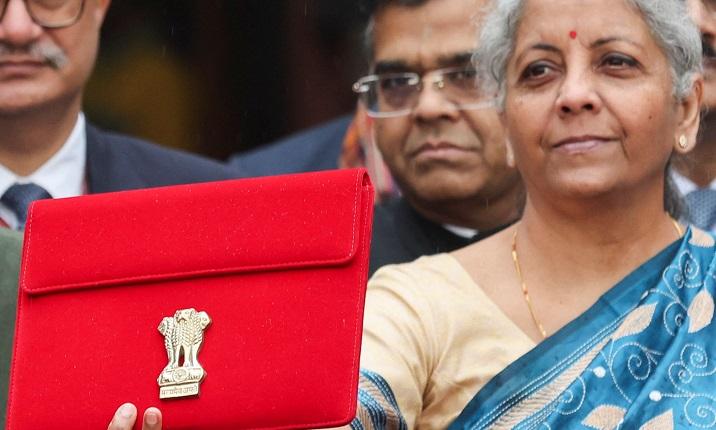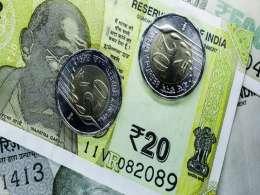The Narendra Modi government on Thursday delivered an interim budget that it said sought to focus on inclusive and sustainable growth, productivity, generation of resources and move India in the direction of becoming a developed economy by 2047.
In what was clearly a sales pitch to the country’s voters to elect the Modi government back to power in the upcoming general elections due in a couple of months from now, Finance Minister Nirmala Sitharaman promised economic reforms that she said would deliver unprecedented growth over the next five years, and herald India towards the path of becoming a developed economy over the next couple of decades.
“The next five years will be years of unprecedented development and golden moments to realise the dream of developed India by 2047,” she said.
The finance minister sought to redefine Gross Development Product (GDP) to ‘governance, development and performance’ as she outlined her government’s key focus areas as- growth, inclusive and sustainable development, productivity, generation of resources, energy security and next generation of reforms.
In her budget speech, Sitharaman sought to deliver on her government’s promise to focus on women, the youth, farmers and the poor. This was a vote-on-account and not a full budget, and she she sought to reach out to as vast a populace as she possibly could.
She further said that the next generation of reforms will be carried out in consultation with state governments. She did not, however, specify what these reforms would look like.
Over the past decade that it has been in power, the Modi government has simplified India’s complicated tax structure and invested in new roads and ports. It has, however, struggled to liberalise labour and land acquisition laws.
Welfare push, capex
The interim budget was high on welfarism, while the government also sought to keep up its push on capital expenditure in the infrastructure sector.
While, for the poor, there was the promise of two crore more houses under the Pradhan Mantri Awas Yojana, on top of three crore that have already been built, for the middle classes too, there was a commitment that the government will ensure affordable housing for all, if it was voted back to power.
The Modi government’s core philosophy over the last decade has been to push capital expenditure, especially in the infrastructure sector. In fact, since 2020-21, the government has massively pushed capex spending, which has gone up multifold over this period.
It stuck to that theme as it upped the infrastructure outlay for the coming financial year to Rs 11.11 trillion, or about $134 billion, an increase of 11%. Capex on infrastructure has a multiplier effect and the real impact of this push should be visible in the coming years on old economy sectors and the real estate, construction and engineering companies that power it.
Fiscal prudence, market borrowing
Despite facing significant economic upheavals since the pandemic, the Modi government has managed to steer a tight ship. While the fiscal deficit for the current financial year is set to be 5.8%, the figure for the coming financial year is projected to be even lower at 5.1%. Sitharaman said that she targets to bring the figure further down to 4.5% by FY’26.
The government has drastically reduced its market borrowing plan for 2024-25. It has pegged its gross and net market borrowing at Rs 14.13 trillion and Rs 11.75 trillion, respectively. This is lower than most estimates on the street, which had pegged the gross market borrowing to be Rs 15 trillion.
The government projected nominal GDP for 2024-25 at Rs 3.5 trillion assuming a 10.5% growth year-on-year.
Although the finance minister did not tinker with direct and indirect tax rates since this was only an interim budget, she did say that tax concessions to startups and investments made by sovereign wealth funds and pension funds will continue. She also said that tax exemptions to some units set up in the International Financial Services Centre (IFSC) that were to expire at the end of March this year, will be extended by a year.
The government also sought to assuage the pain of small taxpayers who had had outstanding tax demands related to previous years. While demands from before FY10 of up to Rs 25,000 will be withdrawn, those of up to Rs 10,000 will be annulled for years between FY10 and FY15.
Sectoral outlays
The interim budget proposed the defence outlay for the next fiscal year at Rs 6.2 trillion. It proposed Rs 2.8 trillion for roads and transport and Rs 2.6 trillion for railways. Consumer affairs and the home ministries were given Rs 2.1 trillion and Rs 2 trillion, respectively. Other ministries that walked away with a lion’s share of the allocations were chemicals and fertilizers (Rs 1.7 trillion) and communications (Rs 1.4 trillion).
The government also sought to give the railways a push by promising three new corridors under the PM Gati Shakti programme, to give a push to the logistics sector in the country. The finance minister also said that the government will build new airports and promote foreign direct investment via bilateral treaties.
Apart from core infrastructure, the government sought to focus more on the renewable energy sector, which it has been pushing since 2015. It announced viability gap funding for wind energy under its vision of ‘net zero’ carbon by 2070. Sitharaman said that one crore households will be enabled to obtain 300 units of electricity per month via rooftop solarisation.
Sitharaman, who was presenting her sixth budget speech, had women at the core of her fiscal policymaking as she said more than 30 crore loans had been disbursed under the Mudra Yojana to women entrepreneurs and that the female labour force participation rate had seen a 37% rise as of 2023. On top of that, there was a 28% rise in female enrollment in higher education over the past decade.
Sitharaman said the government had succeeded in moving 25 crore people out of multi-dimensional poverty over the past decade even as it had disbursed Rs 34 trillion via the direct transfer route under the PM Jan Dhan Yojana.
She said that over the past decade, more than 11.8 crore farmers had benefited from the direct benefit transfer scheme and crop insurance had been provided to four crore farmers under the PM Fasal Bima Yojana.






